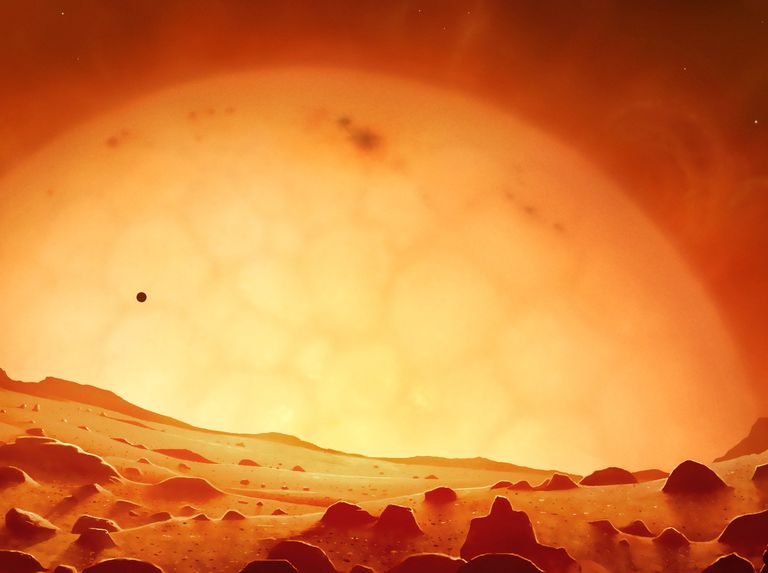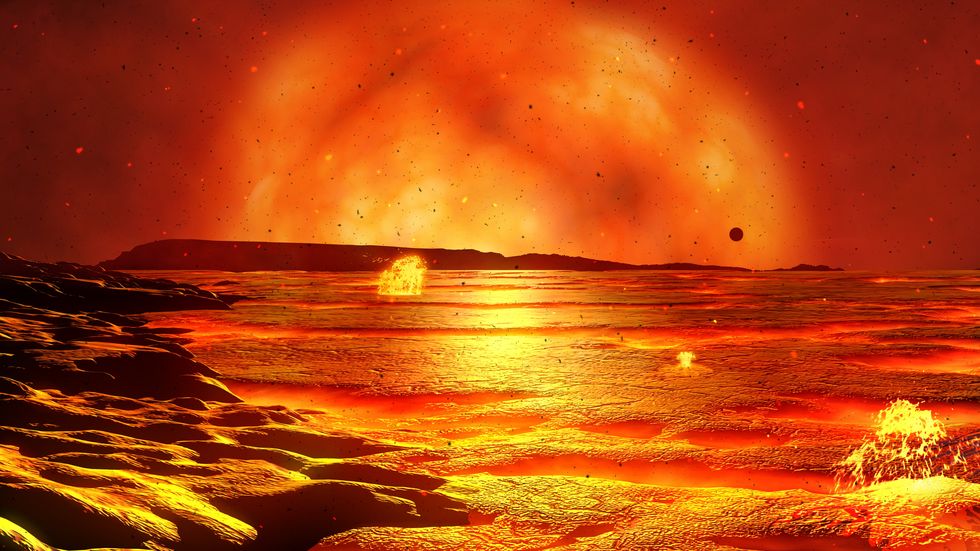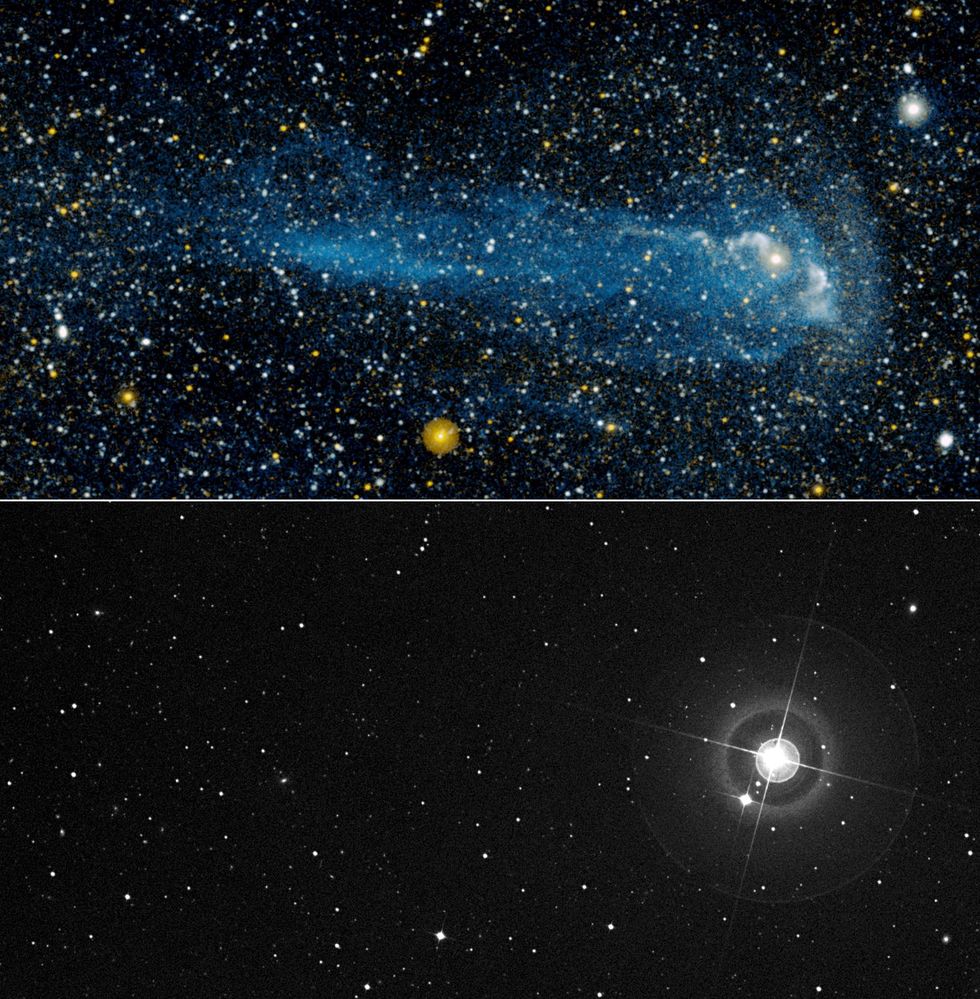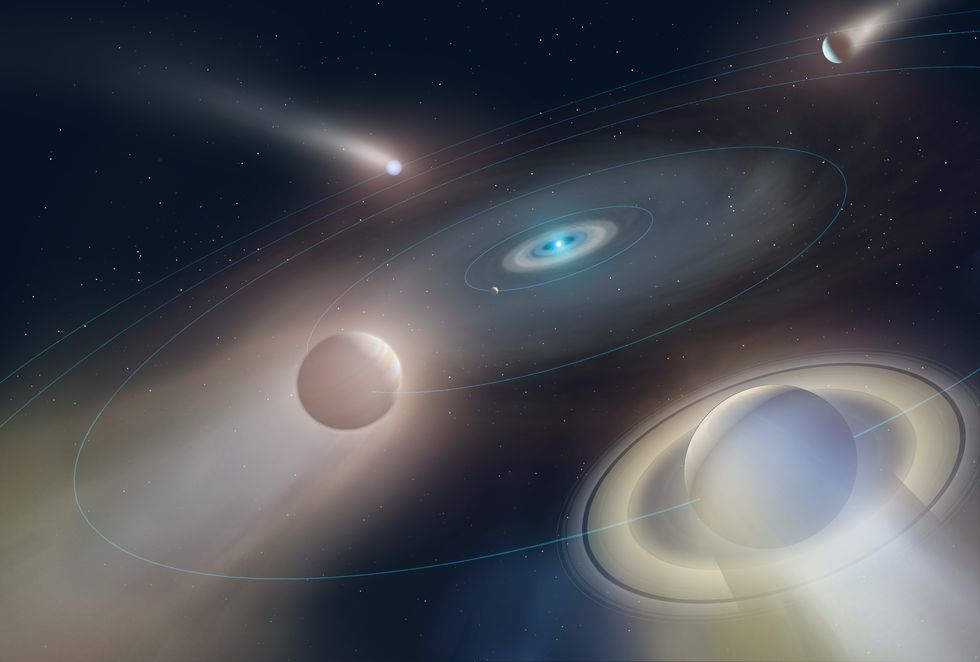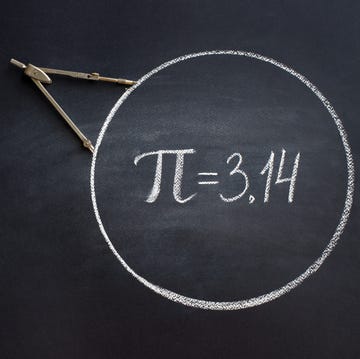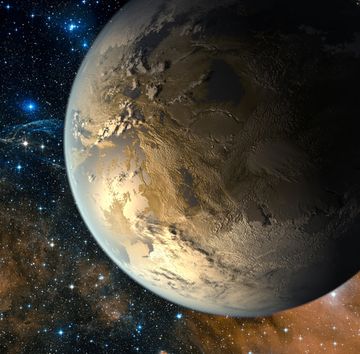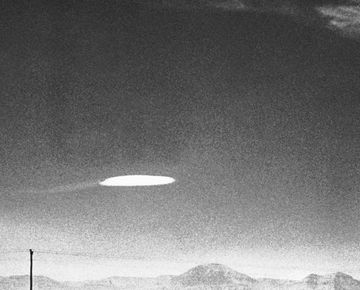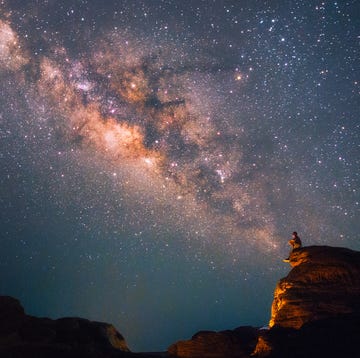The bad news is that when our sun finally dies, Earth will be reduced to a ruined lump of iron, if it’s not outright consumed. The good news is . . . well, there is no good news.
All things must come to an end, even our own solar system. So when will the sun die, anyway? Thankfully, we don’t have to sweat about anything in the short term; our sun is still about four to five billion years away from its eventual—and ultimate—demise.
But our solar system is still going to start getting a little rough in the meantime.
An Aging System
All stars, including our sun, fuse hydrogen in their cores; this is how they produce all their heat and light. But the fusion of hydrogen leaves behind a byproduct: helium. As our sun ages through billions and billions of years, more and more helium builds up in the core. This makes it harder for the sun to fuse hydrogen—the helium is literally pollution getting in the way. To compensate for this and remain in balance, the core of the sun gradually grows hotter with time.
End result: the sun is getting hotter. The dinosaurs knew a smaller, dimmer sun than we do today. Billions of years ago, you wouldn’t even recognize our own star.
It also means that somewhere around 500 million years from now, Earth is going to die its first death. The overheated sun will trigger a runaway greenhouse event. Our oceans will evaporate, dumping their water vapor into the atmosphere, trapping more heat near the surface. That will increase Earth’s temperature, which will evaporate away more oceans, and so on.
Within about 100 million years, our oceans will dry up completely. Without lubrication, the plate tectonics that pull carbon and other greenhouses gases below the crust will grind to a halt. Our atmosphere will bloat and drift away. Life may find refuge in some shadowed pocket or deep underground, but the world that we know and love will be gone.
And then it gets worse.
The End of Hydrogen
After about 4 billion years, the leftover helium ash that has built up for eons will form a solid core in the center of the sun. This will force the hydrogen to fuse in a shell around it. With the energy-producing region of our star shifted away from the center, the rest of the sun will be forced to respond. It will swell to many times its current size. With the outermost layers of the sun so far and disconnected from the core, the surface temperature ironically drops, with its color shifting to longer wavelengths.
It will become a red giant.
Astronomers aren’t exactly sure how large the sun will become in this stage. It will most certainly consume Mercury and Venus. It may also obliterate Earth, dissolving it in a matter of minutes within its fiery embrace. Or, it may merely melt away whatever remains of our atmosphere, and even our delicate crust and mantle, leaving behind an exposed, ruined husk of iron that was once our core.
Know Your Terms: A red giant is a dying star that has run out of hydrogen fuel for nuclear fusion, according to NASA and the European Space Agency. Its name is due to the fact that the energy at the star’s surface becomes “far more dissipated,” cooling that surface down from a white or yellow color to red.
Over the course of a billion years, the temperatures in the helium core will continue to climb, eventually reaching over 100 million Kelvin. At that critical stage, the temperatures and pressures are too much: the entire helium core will undergo a single nuclear event lasting all of a handful of minutes—essentially a nuclear bomb the size of 100 Jupiters.
With its heart cut out, the sun will re-collapse and reassemble itself within about 10,000 years as a helium core surrounded by a layer of fusing hydrogen. But this is no calm star. This time, the temperatures in the core will be high enough to trigger helium fusion. This reborn sun will be about ten times wider and 40 times brighter than it was before.
And now a new cycle will begin.
One Last Dance
Helium fusion produces its own byproducts of carbon and oxygen, which can now do their own job of polluting the innermost core. But helium fusion isn’t as efficient as hydrogen fusion, and so the helium burning will take place at a much faster rate. This phase of the sun’s life will only last about 100 million years: a cosmic blink.
The same story will repeat, but now with all the temperatures and energies ramped up. Too much carbon and oxygen will collect in the core. The helium fusion will move into a shell surrounding that, with the hydrogen fusion making an even larger encompassing shell.
Once again, the sun will transform into a raging red monster. And this one will be even worse than before.
The Sun Is an Endless Source of Wonder:
- 📸 This Is the Closest Image of the Sun Ever Taken. Ever.
- 🌞 Witness the Power of the Sun During 2024’s Total Solar Eclipse
- 🎶 New Acoustic Wave on the Sun Defies Physics
The innermost regions of this giant star will now be frightfully unstable. The helium and hydrogen layers will sputter out and reignite, mix together, and stratify. With every convulsion in the core, the rest of the sun will respond. At its most extreme, the outermost tendrils of the sun’s atmosphere could extend to the orbit of Jupiter. At the other end, it could shrink down almost to its former size.
At this phase, our sun will become what’s known as a Mira variable, named for the star Mira, “the amazing one,” which visibly brightens and dims about once every Earth year. Today, we know how this special pulsation period works, but hundreds of years ago, astronomers around the world watched in awe and horror as one of the brightest stars in the sky faded into nothing.
With every heaving gasp, our sun will lose its outermost layers. A combination of high-velocity solar wind and furious radiation pumping out of the core will blow the outer atmospheric layers like wind in a sail, forcing it to billow across the solar system.
Eventually, it will be too much. The sun will lose almost half its mass. The remainder will sit as an inert lump of carbon and oxygen, exposed to the universe for the first time. But it is within this graveyard that our sun will have one more chance for beauty.
Silent Witness
After 4 billion more years of hydrogen fusion, another billion years of helium fusion, and 100 million years of on-again-off-again red giant cycles, our sun will breathe its last breath. The dense remnant will no longer fuse to survive. Instead, it will just sit there, existing— warm at first, but quickly cooling. A white dwarf.
Toward the end of our sun’s life, the innermost planets will already be gone. The outermost will certainly lose their atmospheres. Their icy moons, once covered in layers of thick frozen water, will thaw, briefly becoming oases. But the chaos of the sun’s death rattles will destabilize their orbits, sending some moons flying inward to be consumed by their angry mother; others will eject from the solar system altogether, forced to wander the lonely depths of interstellar space.
Know Your Terms: When low-mass stars like the sun exhaust their nuclear fuel, they eventually become white dwarves—extremely dense remnants of the stars’ cores. After trillions of years, the white dwarf stars will become black dwarf stars, stellar remnants that have cooled down so much that they are no longer emitting heat or light.
As for the white dwarf, it will initially have a temperature of over 100 million Kelvin, hot enough to emit powerful X-ray radiation. That radiation will filter through the clouds of gas surrounding the dead star, triggering fluorescence. The gas will absorb the X-rays and emit radiation of its own.
It will become a planetary nebula. No two are alike, each created from the intricate and complicated dance of plasma and radiation near the end of a star’s life. There’s no telling what art our own sun will create in its dying days, but future observers could get a glimpse. The white dwarf will only be this hot for about 10,000 years. But if some astronomer on some alien world trains their telescope in our direction at the right time, they will see something beautiful.
Paul M. Sutter is a science educator and a theoretical cosmologist at the Institute for Advanced Computational Science at Stony Brook University and the author of How to Die in Space: A Journey Through Dangerous Astrophysical Phenomena and Your Place in the Universe: Understanding Our Big, Messy Existence. Sutter is also the host of various science programs, and he’s on social media. Check out his Ask a Spaceman podcast and his YouTube page.
